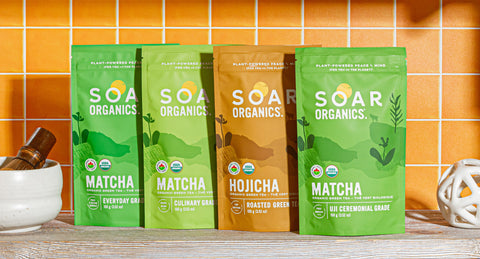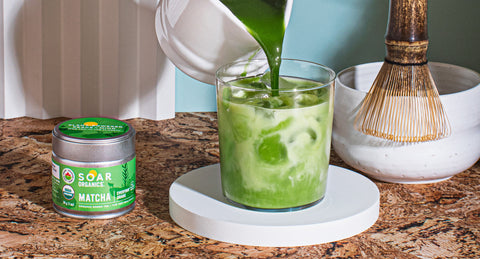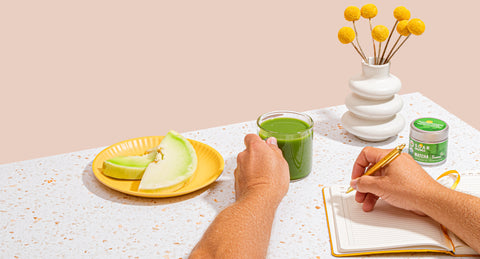Green tea is a timeless beverage cherished for its unique flavors and numerous health benefits. Among the diverse array of green teas available, two varieties that stand out are matcha and hojicha. While they both originate from the Camellia sinensis plant, these teas differ significantly in terms of taste, processing, and nutritional profiles. In this blog post, we'll explore the fascinating world of matcha and hojicha, shedding light on their distinctions and helping you choose the one that best suits your preferences.
Cultivation and Processing:
Matcha: Matcha is made from shade-grown tea leaves, a process that enhances the chlorophyll content and imparts a vibrant green color to the leaves. The leaves are ground into a fine powder, creating the rich and velvety matcha powder we are familiar with.
Hojicha: In contrast, hojicha is made from roasted tea leaves, usually stemming from a later harvest for bolder flavours. The roasting process imparts a warm, toasty flavor and changes the color of the leaves to a reddish-brown hue. Similarly, hojicha can also be finely ground and enjoyed in powder form.
Flavor Profile:
Matcha: Matcha is known for its robust, umami-rich flavor profile. It carries a complex combination of vegetal, slightly bitter, and sweet notes. The preparation of matcha involves whisking the powder into hot water, creating a frothy and indulgent beverage.
Hojicha: Hojicha, on the other hand, offers a milder and smoother taste. The roasting process results in a tea with nutty, caramel-like undertones, free from the astringency often associated with other green teas. Hojicha is typically served hot, although it can also be enjoyed as a cold brew.
Caffeine Content:
Matcha: Matcha contains a higher caffeine content compared to hojicha. The shade-grown leaves accumulate more caffeine, providing drinkers with a sustained energy boost. However, the combination of caffeine with other compounds, such as L-theanine, results in a more balanced and steady release of energy.
Hojicha: The roasting process of hojicha leads to a reduction in caffeine levels, making it an excellent choice for those who are sensitive to caffeine or prefer a more relaxing tea experience.
Preparation Methods:
Matcha: To prepare matcha, one needs a bamboo whisk (chasen) and a bowl (chawan). The whisking technique is crucial to achieve the desired frothy consistency. Matcha is also versatile and can be incorporated into various recipes, such as lattes, smoothies, and desserts.
Hojicha: As hojicha is also available as a powder, preparation methods are very similar. We find most hojicha lovers lean towards a smooth hojicha latte or using it as a unique and fun ingredient for baking.
Conclusion:
In the world of green tea, both hojicha and matcha offer unique experiences that cater to different tastes and preferences. Whether you're drawn to the bold and ceremonial nature of matcha or the comforting, toasty notes of hojicha, each tea provides a delightful journey into the diverse realm of Japanese green teas. Explore both varieties in our Shop to discover the nuances that make each cup a moment to savor and cherish.
Looking for more information on each grade of matcha? Check out our Matcha Buyer's Guide.



